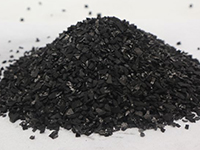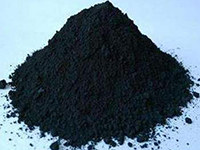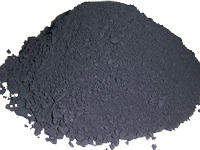As one of the core components of supercapacitor, the performance of electrode material directly determines the overall performance of the device. Electrode materials are mainly divided into double layer and pseudocapacitor materials.
The main materials used for the double-layer super capacitor are carbon based materials, including activated carbon, nano carbon, graphene and so on. Carbon based materials have low cost, high stability and high conductivity. Moreover, based on the mechanism of double electric energy storage of physical adsorption, their power density is very high, and the output current can reach several hundred amperes (the output voltage is about 3V). Therefore, high-performance carbon based materials are still one of the hot spots of scientific research and commercial application. For conventional carbon based materials, the adsorption of electrolyte ions only occurs on the surface of the electrode during charging, while the internal materials are often not fully utilized. In addition, the physical adsorption itself is limited, so the energy density of such electrode materials is often very low.



activated carbon
nano carbon
graphene
The supercapacitor is made of active carbon as electrode material and Li2SO4 as electrolyte. When the output power is 200W/ kg, the energy density is 16.9 WH/kg. When the output power density is increased to 4 kW/kg, the energy density is reduced to 8.4 WH/kg. The key factors to improve the energy density of carbon based materials are to increase the specific surface area, improve the pore size distribution, adjust the particle size and modify the surface state. A highly ordered mesoporous carbon material with high specific surface area, adjustable pore size and functional surface was synthesized by using 3D mesoporous silica with different pore size as template and expired carbonated beverage as carbon source. The material has excellent properties such as high specific surface area (1400-1810m 2/g), large pore volume (1.45-2.81cm 3/g) and adjustable pore size (3.5-5.2nm). The electrode is made at 1 A/g current The highest specific capacitance is 284 f/g at density.
The porous carbon nano sheet with three-dimensional scaffold framework structure was prepared by using Yuqian as carbon source. The specific capacitance of the material in KOH electrolyte is 470 f/g, and the energy density is about 11 WH/kg. Five kinds of waste tea were carbonized at high temperature, and then activated by KOH solution. A kind of amorphous activated carbon with a specific surface area of 2245-2481 m2/g was obtained. Using this material as electrode and KOH as electrolyte, the specific capacitance of the supercapacitor was up to 330 f / g at the current density of 1 A / g, and the cycle stability was excellent. Carbon nanotubes (CNTs) are a kind of nano scale seamless hollow tubular carbon material, which can be regarded as curled graphite, and can be divided into single-walled carbon nanotubes (SWCNTs) and multi walled carbon nanotubes (MWCNTs). Carbon nanotubes are considered as the most ideal electrode materials for supercapacitors because of their high conductivity and more than 2 nm pore diameter. In addition to the end, almost all carbon atoms in the ideal carbon nanotubes should be bonded in the form of hexagons. However, many pentagons and hexagons will be introduced in the mass production, which greatly reduces the performance, and there is self discharge and agglomeration phenomenon after the electrode is made. The common solution is to activate the surface of CNT electrode material to improve its hydrophilicity, or to composite with metal oxide material to make up for the shortcomings. MWCNTs is used as electrode to form super capacitor, the specific capacitance is 62.9 f/g at 1 A / g current density, and the specific capacitance of MoS 2/MWCNTs composite electrode is greatly increased to 452.7 f/G after compounding with molybdenum disulfide.
Graphene is also widely used in supercapacitors. Graphene is a single-layer two-dimensional material with theoretical specific surface area of 2630m2/g, high stability, specific capacitance of more than 200 f/g, excellent power characteristics and cycle stability. A kind of high density graphene thin film (HDGF) was prepared by simply crushing the heat reduced graphene oxide thin film into small pieces. This kind of graphene thin film broke the continuity of graphene thin film while maintaining its compact structure, and realized high packing density and fast ion and electron transmission. The HDGF prepared has high mass specific capacitance (237 f/g) and volume specific capacitance (261 f/cm3) at the same time and excellent cycle stability of 98% initial capacitance after 10000 cycles.
In fact, carbon based material is an excellent active material for any kind of super capacitor. However, there are still some shortcomings of carbon based supercapacitors based on above discussion:
1. low specific capacitance
2. low energy density
3. low selectivity.
The first deficiency is usually caused by the low surface utilization and uneven pore distribution of carbon based materials. Common solutions include flexible selection of carbon source, ingenious design of process route, reasonable use of templates and other methods, and the development of new carbon based materials with unique surface morphology, uniform pores, good dispersion and high degree of electrolyte infiltration.
The second problem can be improved by developing new materials to enlarge the specific capacitance, choosing suitable electrolyte to enlarge the potential window, and manufacturing asymmetric super capacitor with pseudo capacitor materials.
The third disadvantage is that there are fewer kinds of carbon based materials compared with pseudocapacitor materials. The solution is to realize the composite of materials and develop different material systems flexibly according to different situations by using the advantages of different materials.












